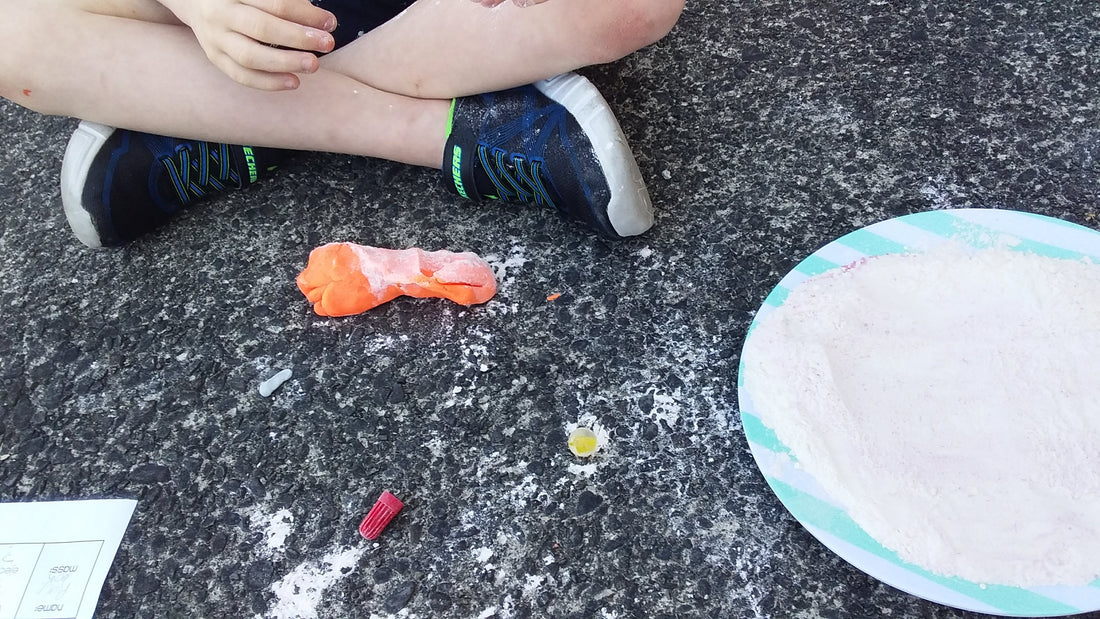
Quick and Easy Science Experiments for after the First Great Story
Share
Look I'll be honest, I love that Volcano explosion demonstration as much as the next person in the First Great Story however there comes a point when you want to add a bit more spark to your science shelf.
There are of course the traditional experiments that go after the lesson, however, if we have children for several years we may need to find a different way to engage them or they may show interest in a different area to our usual science experiments or demonstrations.
1) Craters
I was really excited when I came across this experiment idea. It combines knowledge of physics principles with children's love of all things space!
It is also a great experiment to practice fair trials by repeating an experiment more than once.
Here is how to do it:
You will need:
-A variety of ball-shaped objects
-Plate
-Flour
-Jelly Crystal
-Ruler or tape measure
-Paper and pencil for recording
1) Show students a picture of the craters on the moon. Ask how they were made. Show the small mini "craters" beside the main craters. These are called ejecta. Ejecta is debris that is ejected during the formation of an impact crater.

2) Prepare a plate with flour, sprinkle some jelly crystals over the top (this will help you see whether there are any craters or ejecta made). Ensure the flour is level. Using the back of a knife is one way to do this.

3) Show the students the small ball objects. If desired have the students arrange the balls from lightest to heaviest. Ask them what they think will happen when they drop them into the flour. Will the lighter or heavier ones make a larger hole?

4) Hold the first object 30cm above the surface. Drop it. Observe whether any ejecta are made. Measure the size of the crater. Flatten the flour again and pour on more jelly crystals if needed. Repeat the experiment again with the same object. Do you get the same result? Then do one more time. Discuss this is what scientists do. They repeat things to see whether the same thing happens consistently.
5) Continue step 4 with all of the different objects.

6) We tried a big blob of playdough at the end. We made it in a different shape to the ball and had a great discussion about whether all the objects in space that hit the moon were ball shaped or not.
2) Constellations and Star Clusters
You will need:
-Chalk
-Small objects that can be thrown
We found this free resource on Teachers Pay Teachers. It had a KWL chart, reading passage and comprehension sheet. We then discussed the names of different constellations we knew and how they got their names. As we are based in NZ we talked about the Matariki star cluster and how it has a different name in Japan.
Then we got to the fun part. Using some small wooden pieces we went outside, dropped the wood and used chalk to make our own constellation shapes.
We stood and looked at them from different angles to see if we could see different things.
We did this a couple of times.
Then we went inside and using the free resource above went and wrote an imaginary story about how our constellation or cluster came to be.

3) Gravity
You will need:
Lots of newspaper or an outdoor surface
2 small fruits like berries or grapes
2 larger fruits like apples or oranges.
1) Choose 2 fruits. Put one fruit in each hand. Stand in the middle of the newspaper or outdoor surface. Spin around 2 times and drop the fruit. Record which one falls to the ground first.
2) Repeat with the same fruits. This is a great opportunity to discuss fair trials or fair testing.
3) Choose a different 2 fruits and repeat the process.
4) At the end you could discuss with your students about whether the experiment was fair. For example if you drop an object does its shape change? How do you know you are dropping both fruits with the same force?
You may also be interested in these blog posts:
First Great Story Follow up Ideas (with freebies)
Linking the First Great Story with writing (with freebies)
Why not pin this post for later?


